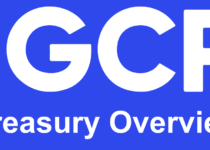Demystifying DAI: A Deep Dive into the Stablecoin Powering Decentralized Finance
In the ever-evolving landscape of cryptocurrencies, stablecoins have emerged as a bridge between the volatility of traditional crypto assets and the stability of fiat currencies. Among these stablecoins, DAI stands out as a decentralized and algorithmic option, playing a pivotal role in the burgeoning world of Decentralized Finance (DeFi). This article delves into the intricate workings of DAI, exploring its technical underpinnings, functionalities within DeFi, and its potential impact on the future of finance.
Understanding Stablecoins: The Need for Stability
Cryptocurrencies offer immense potential for innovation and financial inclusion. However, their inherent price fluctuations pose a significant challenge for widespread adoption. Imagine buying a cup of coffee with Bitcoin today and finding out its price has doubled or halved by tomorrow – such volatility makes cryptocurrencies impractical for everyday transactions. Stablecoins aim to bridge this gap by offering a cryptocurrency pegged to a stable asset, such as the US Dollar (USD). This peg ensures the stablecoin’s value remains relatively constant, making it suitable for everyday use and DeFi applications.
There are several ways to achieve this price stability. Some stablecoins, like Tether (USDT), are centralized, meaning they are backed by a reserve of the underlying asset (USD in USDT’s case) held by a central entity. Others, like DAI, are decentralized, relying on smart contracts and algorithms to maintain the peg.
DAI: A Decentralized and Algorithmic Stablecoin
DAI, launched in 2017 by MakerDAO, is a decentralized stablecoin pegged to the US Dollar. Unlike centralized stablecoins, DAI isn’t backed by a direct USD reserve. Instead, it utilizes an ingenious system of smart contracts and collateralized debt positions (CDPs) to maintain its value.
Here’s how it works:
- Collateralization: Users lock up crypto assets, such as Ether (ETH), in a CDP on the MakerDAO platform. These locked assets act as collateral for the DAI they borrow.
- Stability Fee: Users who borrow DAI pay a stability fee, a small interest rate charged by the MakerDAO system. This fee helps maintain the peg and incentivizes users to repay their DAI loans.
- Debt Ceiling and Floor: There are pre-defined debt ceilings and floors on the value of collateral relative to the borrowed DAI. If the value of the collateral falls below the floor (meaning the loan becomes undercollateralized), the system auctions off a portion of the collateral to repay the debt. Conversely, if the value of the collateral increases significantly above the ceiling, users are incentivized to repay their DAI loans and reclaim their full collateral.
This dynamic system of collateralization, stability fees, and debt ceilings/floors ensures that the total value of CDPs (backed by locked-up crypto assets) always exceeds the total DAI in circulation. This mechanism helps maintain the peg between DAI and USD.
Benefits of DAI: Powering Decentralized Finance
DAI has become a cornerstone of DeFi, a rapidly expanding ecosystem of financial applications built on blockchain technology. Here are some key benefits of DAI that contribute to its role in DeFi:
- Decentralization: Unlike centralized stablecoins, DAI eliminates the need for a trusted third party to hold reserves. This fosters greater trust and transparency within the DeFi ecosystem.
- Stability: The algorithmic system of CDPs and stability fees helps maintain a relatively stable price for DAI, making it suitable for transactions and DeFi applications.
- Borrowing and Lending: Users can borrow DAI by locking up crypto assets as collateral. This opens up possibilities for decentralized lending platforms and margin trading within DeFi.
- Liquidity: DAI acts as a readily available source of liquidity within DeFi protocols. This allows users to easily exchange other cryptocurrencies for DAI and vice versa.
Real-World Applications of DAI in DeFi
DAI’s unique features power various applications within the DeFi landscape:
- Decentralized Lending Platforms: Platforms like Compound and Aave allow users to borrow and lend DAI, earning interest on their crypto holdings or accessing liquidity without selling their assets.
- Decentralized Exchanges (DEXs): DEXs like Uniswap and SushiSwap utilize DAI as a trading pair, enabling users to exchange other cryptocurrencies for DAI and vice versa.
- Margin Trading: Some DeFi protocols allow users to borrow DAI to amplify their trading positions, potentially increasing profits but also magnifying losses.
- Decentralized Insurance (DeFi Insurance): DAI can be used as a premium currency for decentralized insurance protocols, offering protection against various risks associated with DeFi activities.
These are just a few examples, and as the DeFi ecosystem continues to evolve, we can expect even more innovative applications for DAI to emerge.
Challenges and Considerations for DAI 
-
Price Volatility of Collateral: The value of the crypto assets used as collateral for DAI loans can fluctuate. If the value drops significantly, it could lead to a situation where there’s not enough collateral to back all the DAI in circulation, potentially jeopardizing the peg.
-
Smart Contract Risks: Like any system relying on smart contracts, DAI is susceptible to vulnerabilities if bugs or exploits are discovered in the underlying code.
-
Scalability Limitations: The current iteration of the MakerDAO protocol might face scalability challenges as the DeFi ecosystem grows and the demand for DAI increases.
-
Decentralization vs. Efficiency: Maintaining a decentralized system can sometimes lead to slower transaction times compared to centralized alternatives.
These challenges highlight the ongoing development and refinement of DAI and the MakerDAO platform. The team behind DAI is constantly working to improve the system’s stability, security, and scalability.
The Future of DAI and Decentralized Finance
DAI has established itself as a crucial player in the burgeoning world of DeFi. As DeFi continues to gain traction, the demand for stablecoins like DAI is likely to surge. Here are some potential future directions for DAI:
- Integration with Traditional Finance: DAI could potentially bridge the gap between traditional finance and DeFi, allowing institutions and individuals to participate in DeFi activities without directly dealing with the volatility of other cryptocurrencies.
- Evolution of the MakerDAO Protocol: The MakerDAO team is continuously working to improve the protocol’s efficiency, security, and scalability to handle a larger volume of transactions.
- Emergence of New Use Cases: As the DeFi landscape matures, we can expect novel applications for DAI to emerge, further expanding its utility and reach.
Overall, DAI presents a compelling vision for a stable and decentralized financial system. While challenges remain, the potential benefits of DAI and DeFi are significant. By fostering innovation and collaboration, the future of DAI and DeFi seems bright, paving the way for a more inclusive and transparent financial landscape.
Exploring Additional Aspects of DAI
This article has provided a comprehensive overview of DAI and its role in DeFi. Here are some additional points to consider:
- Regulation: As DeFi continues to grow, regulatory frameworks are likely to evolve. How these regulations impact DAI and other stablecoins remains to be seen.
- Sustainability: The environmental impact of Proof-of-Work blockchains used by some collateral assets for DAI is a growing concern. Exploring alternative, more sustainable consensus mechanisms could be crucial for the long-term viability of DAI.
- Education and Awareness: For widespread adoption, increasing public education and awareness about DAI and DeFi is essential.
By staying informed about these ongoing developments, you can gain a deeper understanding of DAI’s potential and its role in shaping the future of finance.







